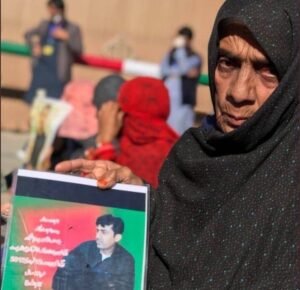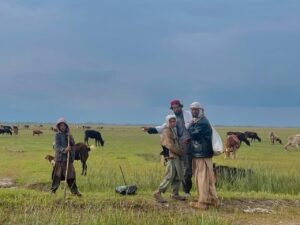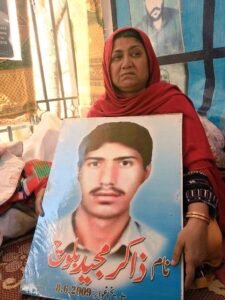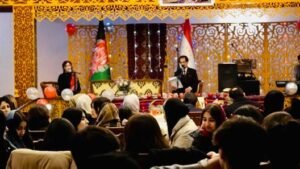Confronting the Climate Crisis: A Call for Action

Photo by @Gulistan for ADN
By Fatima Chaudhary
Pakistan is at a tipping point in the face of a rapidly escalating climate crisis. From rising temperatures and erratic weather patterns to devastating floods and air pollution, the nation is witnessing environmental challenges that threaten its very survival. Yet, despite the growing urgency, the lack of credible action and long-term vision from the Pakistani government continues to undermine efforts to address these existential threats.
Pakistan ranks among the most climate-vulnerable countries in the world, despite contributing less than 1% of global greenhouse gas emissions. Its geography and socio-economic vulnerabilities make it uniquely susceptible to climate-induced disasters, such as floods, droughts, and extreme weather events. In 2022, catastrophic floods displaced millions and inflicted damages exceeding $30 billion.
The impacts are not just economic. Vulnerable communities, especially in coastal regions, the Indus River basin, and arid zones, are bearing the brunt of this crisis. These regions face not only displacement but also threats to food security, access to clean water, and healthcare. Yet, the government’s response remains reactive and piecemeal, lacking the robust systems needed to tackle the crisis head-on.
Despite its vulnerability, Pakistan’s climate governance is woefully inadequate. While the government has set ambitious targets, including a pledge to cut greenhouse gas emissions by 50% by 2030 in its Nationally Determined Contributions (NDCs), the pathway to achieving these goals remains unclear. Experts argue that these commitments are more aspirational than actionable, given the systemic issues plaguing the country’s administrative machinery.
Corruption, bureaucratic inefficiency, and a disregard for merit have stifled progress. Key climate-related initiatives are often outsourced to international consultants, reflecting a lack of domestic capacity. Meanwhile, provincial administrations, which play a critical role in implementation, are notorious for their inefficiency and lack of coordination.
The absence of sustainable financial resources further complicates matters. Pakistan requires an estimated $200 billion in climate finance, but its share from the Green Climate Fund remains a mere $256 million—insufficient for even the most basic mitigation and adaptation projects. The nation’s inability to effectively utilize the funds it does receive, due to poor project management and governance, further exacerbates the problem.
One of the most glaring examples of governance failure is visible in urban centers like Lahore. Once known as the “City of Gardens,” Lahore has transformed into a polluted urban sprawl. Hazardous air quality, driven by unchecked construction, deforestation, and vehicle emissions, now defines the city. Every winter, smog blankets Lahore, causing severe health issues and disrupting daily life.
This crisis is a direct result of unregulated urban expansion and a focus on profit over sustainability. Green spaces have been sacrificed for high-rise buildings and housing societies, while industrial emissions remain poorly regulated. Short-term fixes, such as temporary restrictions on vehicles or crop burning, fail to address the root causes of pollution.
Experts stress the need for comprehensive urban planning that prioritizes environmental sustainability. This includes reintroducing green belts, enforcing emissions standards, and expanding public transportation systems. However, without strong governance and accountability, these solutions remain out of reach.
On the global stage, Pakistan has put forth its vulnerability to climate change, aligning with the G77 bloc to demand climate justice. Yet, its efforts often fall short due to a lack of preparation and technical expertise. Delegations to international forums, such as COP29, are frequently composed of non-technical officials, undermining the country’s ability to negotiate effectively.
While international climate finance is essential, Pakistan must also focus on domestic reforms. Reliance on foreign aid and loans is not a sustainable solution. Instead, the government must build internal capacity, streamline climate governance, and foster public awareness to create a sense of collective responsibility.
Pakistan’s climate crisis requires immediate and sustained action. Experts emphasize the need for both micro- and macro-level planning. At the local level, initiatives such as afforestation, waste management, and renewable energy projects can have a significant impact. At the national level, structural reforms are essential to address corruption, improve governance, and mobilize resources effectively.
Public engagement is equally critical. Citizens must be educated about the impacts of climate change and empowered to demand accountability from both government and industry. Civil society organizations can play a pivotal role in bridging the gap between policymakers and communities.
The consequences of inaction are already visible. From displaced families to toxic air, the climate crisis is no longer a distant threat but a present reality. If Pakistan fails to act now, the damage could become irreversible, with devastating consequences for its people and environment.
The government must prioritize climate action, not as an isolated agenda but as a fundamental component of national development. This means investing in sustainable infrastructure, enforcing environmental regulations, and ensuring that climate considerations are integrated into all policy decisions.
The time for half-measures has passed. Pakistan must rise to the challenge, not only to secure its future but also to set an example for other vulnerable nations. The stakes could not be higher, and the cost of inaction is too great to ignore.
Fatima Chaudhary is a lecturer at a private university in Punjab province.
Note: The contents of the article are of sole responsibility of the author. Afghan Diaspora Network will not be responsible for any inaccurate or incorrect statement in the articles.









